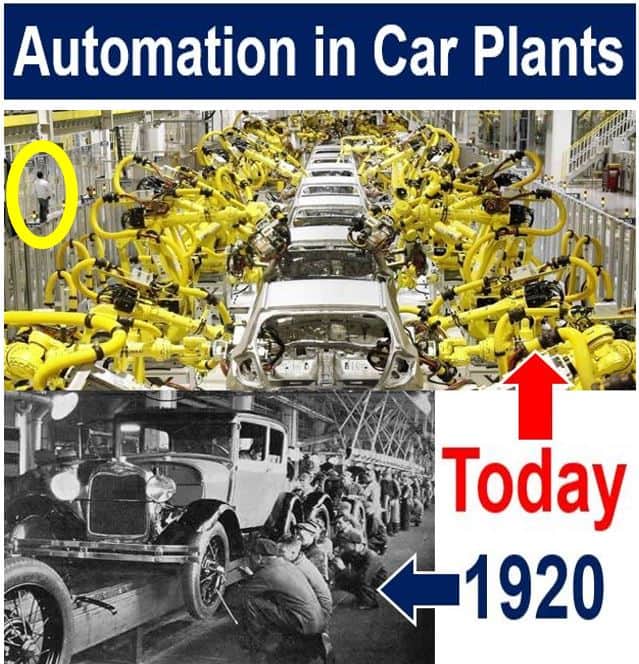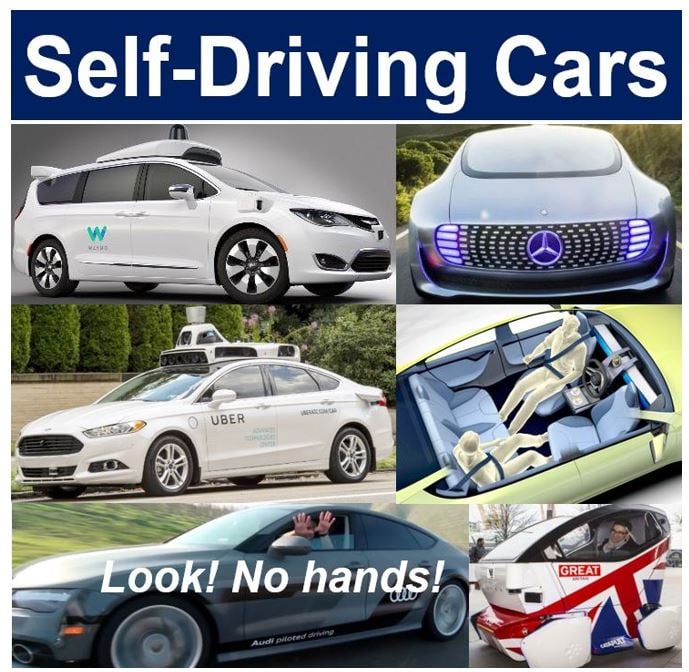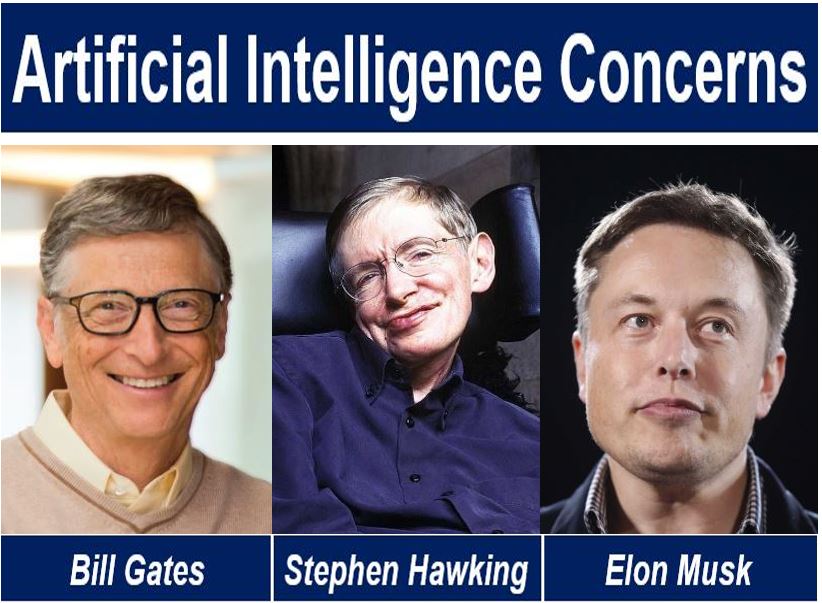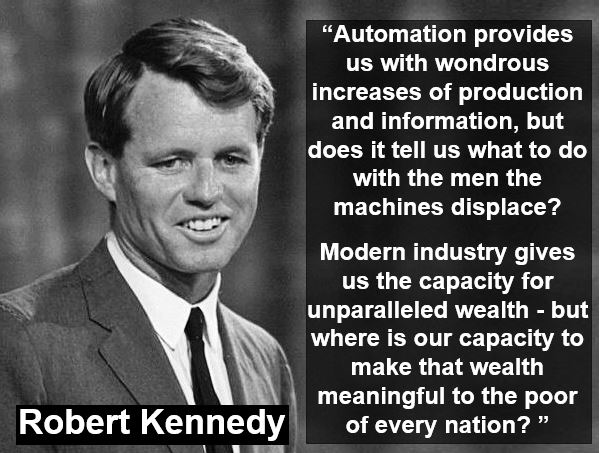Automation is the use of electronics and computer-controlled devices to assume control of processes. The aim of automation is to boost efficiency and reliability. In many cases, however, automation replaces labor.
The role of automation in industries
In many manufacturing plants today, robotic assembly lines are progressively carrying out functions that humans used to do – the term ‘manufacturing’ refers to converting raw materials and components into finished goods, usually on a large scale in a factory.
Automation encompasses many key elements, systems, and job functions in virtually all industries. It is especially prevalent in manufacturing, transportation, facility operations, and utilities. Additionally, national defense systems are becoming increasingly automated.
Automation today exists in all functions within industry including integration, installation, procurement, maintenance, and even marketing and sales.

Artificial intelligence is gradually creeping into every aspect of our daily lives. Not only is it becoming more common in the workplace, but also in the home and even outdoors. Will it lead to a better quality of life and standard of living for humans?
Let’s take a look at some positive economic impacts and some negative impacts:
Positive Economic Impacts of Automation
- New Jobs: Automation brings new specialist roles, such as robot technicians and system analysts.
- Boosted Productivity: Machines work fast and precisely, raising production rates.
- Business Savings: After initial setup, automated processes can be cheaper, letting businesses invest elsewhere.
- Innovation Growth: With routine tasks automated, humans can focus on creative and complex challenges.
- Global Advantage: Adopting automation gives countries and businesses a competitive edge in global markets.
- Consumer Benefits: Savings from automation can lead to better prices and improved service quality.
- Aiding Aging Populations: In countries with more elderly citizens, automation can fill workforce gaps, maintaining economic health.
Automation offers several economic benefits, from creating new jobs to supporting demographic challenges.
Negative Economic Impacts of Automation
- Job Displacement: Initial automation can lead to job losses, especially in repetitive-task roles.
- Skill Gap: There’s a growing demand for tech-savvy workers, potentially sidelining those without specific skill sets.
- Wage Stagnation: While productivity might rise, it doesn’t always translate to increased wages for workers.
- Economic Inequality: The wealth generated by automation might concentrate with those who own the technology.
- Short-term Economic Disruptions: As sectors automate, there can be immediate economic jolts before eventual stabilization.
- Loss of Human Touch: In service industries, automation could lead to less personalized service.
- Over-reliance on Technology: An over-dependence on automated systems might render economies vulnerable to tech failures or cyber-attacks.
While automation has its benefits, it also presents economic challenges that need proactive addressing.

Automation and the office environment
Over the past forty years, information technology has completely changed the office environment. Such functions as communication, documenting, correspondence, and filing have become fully automated. Offices today even feel and look completely different from what used to exist in the 1950s.
Apart from the huge difference in decibel levels, our offices today have much less furniture. Offices used to have loud typewriters, filing cabinets, and other furniture.
If we could travel in a time machine to the 1950s, the piles of paper would amaze us.
The average office desk used to be full of materials and equipment. Examples included folders full of paper documents, calculators, phone books, staplers, diaries, and post-it-notes. There were also Filofaxes, sticky tape, pens, and even paper maps and atlases.
While some traditional office workers still keep a number of these items in their desks, technology, and automation have eliminated the need for most of them.
How many of us today use a map made of paper to find directions compared to thirty years ago? When you wanted to find somebody’s phone number, you had to look it up in a book. You could also telephone a service and talk to a human being. Today, however, we go online or talk to a robot programmed with voice-recognition software.
In the realm of healthcare, automation technologies are streamlining patient records management, leading to more efficient and error-free administration.
Automation and flexible working
Technology has shifted most office workers from a fixed 9-to-5 routine to flexible working. Thanks to the Internet, the Cloud, laptops, tablets, and smartphones, we can now work from anywhere. Not only can we work wherever we like, but also whenever we want to.
This flexibility means that people are now better able to manage their work-versus-life balance. However, we now have a new problem; we cannot switch off from work completely anymore.
Bank branches used to have lots of staff and customers in them. Today, fewer and fewer of us do our banking physically inside a branch. We do most of our banking either online or by talking to robots on the phone.
Even if we go into a branch, most of the now are full of machines and technology inside. These state-of-the-art machines allow us to complete our banking tasks. In fact, most of us could easily manage without ever having to meet a human banker face-to-face.
Automation in the automotive industry

Professor Henrik Christensen, from the University of California San Diego’s Contextual Robotics Institute, believes that babies born today will never drive. Self-driving cars will be everywhere. He also predicts that a wave of companion robots will serve as health care, home companions, assistant robots, robotic pool cleaners, and many others.
Automation in the manufacturing environment
Manufacturing has undergone enormous changes over the past few decades. Employment in manufacturing in the advanced economies has declined considerably.
In 1996, fourteen percent of the US workforce worked in manufacturing, compared to just 8% today. That dramatic decline was in just two decades! Who knows what the percentage will be in two decades’ time!
Not all of those jobs have disappeared because of automation. Some jobs have shifted abroad to countries with cheaper labor costs. However, a sizable proportion of that loss has been due to automation.
Experts say that the rate of decline in manufacturing employment will not slow down. In fact, most of them predict the problem will get progressively and more rapidly worse.
Number of robots rising fast
In the US, there were 1.2 million robots in factories and warehouses in 2012. This number jumped to 1.5 by the end of 2014.
The Brookings Institution said that by the end of 2016, there were 1.9 million robots in factories and warehouses. In other words, over a period of four years, the number of robots rose by nearly 60%.
Robots are becoming more sophisticated and skilled at performing complicated tasks. The high costs associated with transforming a labor-intensive factory to an automated one is changing. The cost differential with human workers is narrowing rapidly, to the robots’ advantage.
Put simply, it is becoming cheaper and within more business’ budgets to convert to full automation.

The late Professor Stephen Hawking, Bill Gates and Elon Musk have often expressed concern regarding artificial intelligence (AI). They worry about what will happen to us as AI becomes more sophisticated and smarter. Prof. Hawking said: “It [AI] would take off on its own, and re-design itself at an ever increasing rate. Humans, who are limited by slow biological evolution, couldn’t compete, and would be superseded.” The three men were nominated for Luddite of the Year, mainly because of their worries regarding AI.
Automation capital costs declining
Over the past decade, the price of automation equipment, especially industrial robots, has dropped dramatically, making it more accessible across a wide range of industries. For example, the global average cost of an industrial robot fell from around $46,000 in 2010 to about $27,000 in 2017, and projections suggest it could dip further to roughly $11,000 by 2025.
Similarly, an Ernst & Young (2023) report indicates that the average price of industrial robots halved from $47,000 in 2011 to around $23,000 in 2022 and is “poised to continue dropping,” potentially another 50–60% by 2025. This declining trend mirrors what we’ve seen with other maturing technologies: as time goes on, prices tend to decrease, making automation hardware more affordable and widespread.
Automation will dramatically change society
Robots and other technologies are not only replacing workers in manufacturing, but also in teaching. The number of online courses that run automatically has exploded over the past decade.
The way we move around will soon change dramatically. It will not be long before private cars, buses, and trains have no drivers. In fact, even commercial airliners will probably have no pilots by the middle of this century.
Even professions that are super-secure today will eventually give way to robots. Robot surgeons, doctors, and veterinarians will probably run all aspects of medicine by the end of this century. In other words, by the year 2100, there might not be any human medical professionals.
According to research from Forrester, approximately 2.4 million jobs in the US are expected to be replaced by generative AI by 2030.
Automation and massive unemployment
There is growing concern that in the future, only those with specialized qualifications will have jobs. Perhaps skilled artists, talented musicians, and others with gifts that humans admire will be busy. However, what will happen to the rest of the population is anybody’s guess.

Robert (Bobby) Kennedy (1925-1968) was an American politician from Massachusetts. He was a United States junior senator from New York from January 1965 until June 1968, when he was assassinated. (Image: Wikipedia)
Moshe Vardi warns that over 50% of the world’s workforce will be unemployed within thirty years because of automation. Prof. Vardi is Distinguished Service Professor of Computational Engineering at Rice’s Department of Computer Science.
Not only will smart robots replace humans in the workplace, they will probably out-perform us too.

Bill Gates is an American business magnate, investor, author, entrepreneur, and philanthropist. He co-founded Microsoft with Paul Allen, which became the largest PC software company in the world. Since 1995, he has been rated by Forbes as the richest person in the world on many occasions. (Image: biography.com)
Regarding how humans and robots perform, Prof. Vardi said:
“We are approaching a time when machines will be able to outperform humans at almost any task. I believe that society needs to confront this question before it is upon us: If machines are capable of doing almost any work humans can do, what will humans do?”
Our schools must restructure their curricula so that pupils get better training in math, engineering, technology, and science. There is a growing need for workers with *STEM skills as software developers, systems analysts, biomedical engineers, and some other fields.
* STEM stands for Science, Technology, Engineering, and Math.
Video explanation
This video explains what the term automation means using easy-to-understand language and examples:
